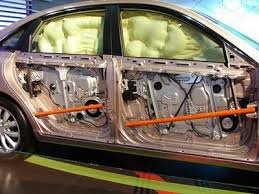
Understanding Car Components A Comprehensive Overview
The automobile industry is a vast field, rich with intricate designs and complex systems. Cars, which have become an indispensable part of modern life, consist of numerous components that work together seamlessly to provide a reliable, safe, and efficient driving experience. Understanding these components can enhance our appreciation for automotive engineering and can be particularly useful for those interested in maintenance or repair.
1. Engine
At the core of any vehicle is the engine, often referred to as the heart of the car. It converts fuel into mechanical energy through a process of combustion. Most modern vehicles use internal combustion engines (ICE), which includes gasoline and diesel engines. Electric vehicles (EVs) use electric motors powered by rechargeable batteries instead. The engine’s components include pistons, crankshafts, camshafts, and valves. The precise configuration and alignment of these elements are crucial for optimal performance.
2. Transmission
The transmission is responsible for transferring the engine's power to the wheels, enabling the vehicle to move. It essentially dictates how much power and torque is delivered at different speeds. There are several types of transmissions, including manual, automatic, and continuously variable transmissions (CVT). Each type serves the same purpose but operates quite differently in terms of driver control and efficiency.
3. Suspension
The suspension system is critical for providing a comfortable ride and maintaining the vehicle's stability. It absorbs shocks from the road and ensures that the tires remain in contact with the surface for optimal traction. This system includes components such as shock absorbers, springs, and control arms. A well-tuned suspension can significantly enhance driving performance and passenger comfort.
4. Steering System
The steering system allows the driver to control the direction of the vehicle. It includes the steering wheel, column, rack and pinion, and linkages that connect to the front wheels. There are also power steering systems, which use hydraulic or electric actuators to reduce the effort needed to turn the wheel. This system is pivotal for navigation and overall vehicle control.

5. Braking System
Safety is paramount in automotive design, and the braking system is perhaps the most crucial component in ensuring that. It comprises disc brakes or drum brakes, brake pads, calipers, and brake fluid. When the driver presses the brake pedal, the system reduces the vehicle's speed or brings it to a complete stop. Advances in technology have introduced anti-lock braking systems (ABS), which prevent the wheels from locking up during hard braking.
6. Electrical System
Modern vehicles depend heavily on a robust electrical system. This includes the battery, alternator, and a network of wiring that powers various components like lights, infotainment systems, and sensors. The electrical system is vital for the operation of many safety features, including airbags and stability control.
7. Exhaust System
The exhaust system plays a crucial role in redirecting harmful gases produced during combustion away from the engine and the passengers. It consists of components like the exhaust manifold, catalytic converter, muffler, and tailpipe. A well-functioning exhaust system minimizes emissions and enhances engine performance, contributing to the overall efficiency of the vehicle.
8. Fuel System
The fuel system is responsible for storing, filtering, and delivering fuel to the engine. Key components include the fuel tank, fuel pump, fuel injectors, and fuel filter. This system ensures that the engine receives the right amount of fuel for optimal performance. In modern vehicles, fuel systems are often controlled by sophisticated electronic control units (ECUs) for improved efficiency and emissions control.
Conclusion
Understanding the various components of a car is essential to appreciating the complexity of automotive engineering. From the engine that powers the vehicle to the safety features that protect us, each part plays a significant role in ensuring a smooth and safe driving experience. Whether you are a car enthusiast, a potential owner, or simply curious about how vehicles work, a knowledge of car components can empower you to make informed decisions about maintenance and purchases in the automotive realm.